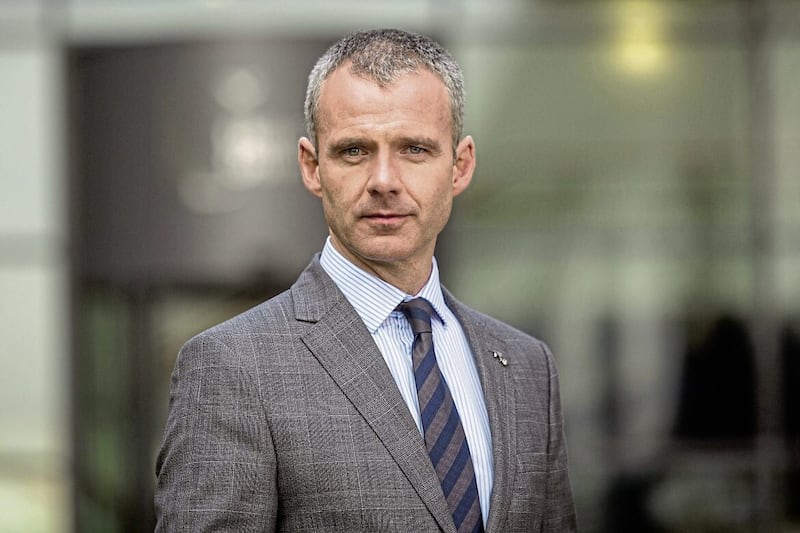The Stormont Executive published its draft Programme for Government (PfG) last month, which in simple terms is their strategic plan for Northern Ireland for the remainder of the Assembly’s current mandate.
Usually, the response to PfG publications falls into two camps, firstly, those who can only see the problems and omissions and secondly, those who believe that the publication of the PfG at all, is reason for celebration.
As is usual, the truth sits somewhere in the middle. To start with the positives, importantly it recognises the need to prioritise. Given the constraining financial environment, the Executive cannot afford to do everything and therefore decisions must be taken. With my economic bias it is positive to see a focus on both growing a globally competitive economy and reforming public services.
Whilst some may be disappointed, others will see their priorities included such as more affordable childcare, more social housing and the need to reduce health waiting times.
The plan recognises the local economy’s long term low productivity rate, the need to encourage business investment and continued skills development. In addition, public sector reform and transformation is also critical if we are to provide high quality public services in future.
As noted in the report, the Department of Health currently receives 52% of the Executive’s total budget, up from 41% in 2011. Despite the scale of that increase, waiting times are through the roof, which is simply not a sustainable position and change is essential.
Turning to the areas for improvement, one of most common criticisms of the PfG was the delay in its publication. The Executive was restored in February but the plan was not published until September. This criticism has some justification, the new Labour Government has only been in office for three months and are already being heavily criticised for the absence of “a plan”.
However, in a word of defence to the Executive, agreeing a plan across a four-party mandatory coalition is a lot more challenging than for a single party who were facing an election they were certain to win. This speaks to a separate issue with Stormont, namely the governance structure requiring a mandatory coalition which makes real electoral change almost impossible.
On other issues, this PfG is in draft form and currently out to consultation, therefore it may be tweaked before the finalised plan is agreed. In the interim, some suggestions for inclusion in the final PfG are made.
The main gaps in the document are targets and delivery time lines. The first steps have been put in place to assist monitoring through the ‘Wellbeing Framework”, an online tool which tracks a range of performance indicators across each priority.
It is still in development and therefore the data and indicators will improve, but the absence of targets shows a lack of political accountability and should be remedied.
In addition, although the PfG sets out many proposed actions, it is not clear when these actions will be undertaken. It is important to understand that this is a high-level plan and therefore it must fall to each minister to develop a more detailed departmental plan that sets out these actions and time lines. One would hope those plans are already well developed.
This raises another challenge, many of the priorities can only be achieved through two or more Government departments working together. This is an age-old problem and typically relies on strong professional relationships between senior civil servants in different Departments, for example if one moves to a new department but maintains strong links with their former colleagues.
This is fine when it happens but relying on people knowing each other and getting along is not a strategy for delivering transformation. The Executive should therefore develop a specific mechanism for facilitating greater cross-Departmental working. This will also challenge the skillsets of ministers.
Tony Blair, reflecting on his time as Prime Minister, said that implementing a tax cut is easy, it just requires a signature, but implementing public service reform is hard. He said that a good minister must also be a good project manager. In short, delivering change is hard and capable ministers will be needed to drive it through.
Finally, the tricky issue of funding. The budget was announced before the PfG was agreed, which runs counter to the normal sequence of events. The plan and priorities are usually agreed first and then the finances are allocated accordingly.
This did not happen because of the need to agree a budget quickly to address the projected in-year overspend they had inherited before a PfG could be developed.

However, given the PfG is multi-year, future budgets and the spending review will provide other opportunities for the Executive to align funding with priorities.
This plan represents the first step, but achieving its lofty ambitions will be a long journey. Therefore, we must support our ministers on that journey, but importantly they must also take those difficult first steps and without delay.
- Gareth Hetherington is director at the Ulster University Economic Policy Centre (UUEPC)





